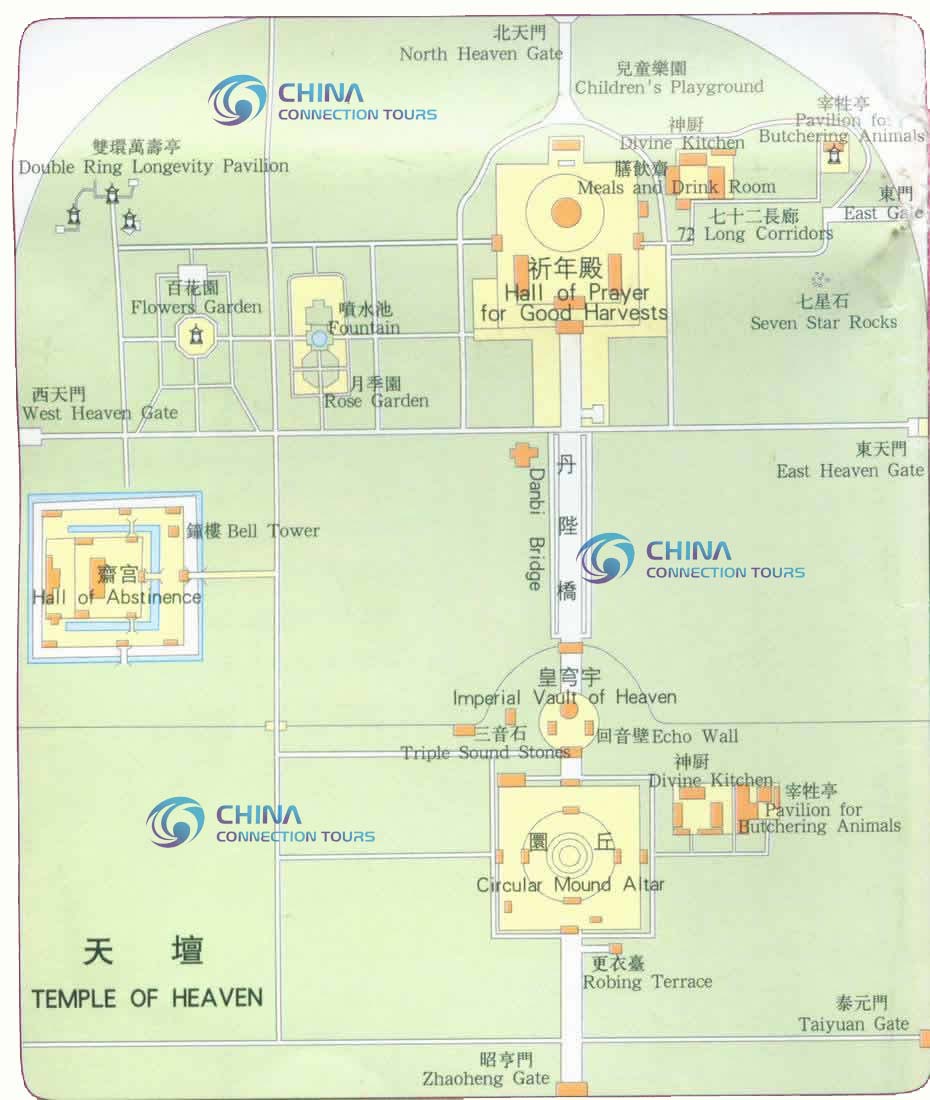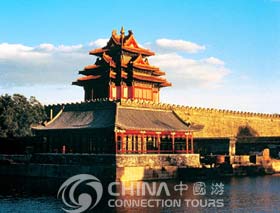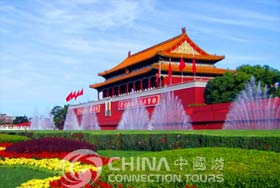
Beijing is the political and cultural center of the People's Republic of China, and the spiritual and political heart of the country. Beijing (meaning Northern Capital) is perhaps the most cosmopolitan city in China. Great changes have taken place since the founding of the People's Republic of China in 1949.
The total area of Beijing city is approximately 750 sq. km (290 sq. mi). It is laid out in an orderly design, with long, straight boulevards and avenues crisscrossed by a network of lanes. The Yanshan Mountain range forms a screen to the northeast. The long, winding Taihang Mountain range is to the west. To the northwest, the vast Mongolian plateau begins.
 Beijing has four definite seasons. Summer and winter are the two longest seasons with fall and spring being the shortest. Autumn, which is usually clear with cool temperatures, is the most pleasant time to visit. Winters are dry and, at times, bitterly cold with temperatures dropping below 5 degrees F (-15 C). Spring is usually dry and windy, while the summer is rainy and hot with temperatures soaring above 100 F (38 C). In winter, cold, dry winds blow out of Siberia and Mongolia; in summer, warm, moist air currents from the southeast take over. A general change of wind direction occurs in March or April and again in September.
Beijing has four definite seasons. Summer and winter are the two longest seasons with fall and spring being the shortest. Autumn, which is usually clear with cool temperatures, is the most pleasant time to visit. Winters are dry and, at times, bitterly cold with temperatures dropping below 5 degrees F (-15 C). Spring is usually dry and windy, while the summer is rainy and hot with temperatures soaring above 100 F (38 C). In winter, cold, dry winds blow out of Siberia and Mongolia; in summer, warm, moist air currents from the southeast take over. A general change of wind direction occurs in March or April and again in September.
The average annual rainfall of 630 millimeters is regarded as a generous "heavenly endowment" for North China, which is otherwise short of rain. The coldest month is January, with an average temperature of -4.7C, while the hottest month is July, with an average of 26.1C. Rapid temperature increases in the spring are often accompanied by sandstorms, but windless days in that season are wonderfully pleasant. Autumn, though short-lived, is a concentrated stretch of clear, crisp days and patchwork trees.
Beijing has over 13.8 million people. Han Chinese make up over 95% of the population. Mandarin Chinese is the language spoken in Beijing, with Beijing's dialect being the standard form of Mandarin. The major organized religions are Daoism (or Taoism), Buddhism, Confucianism, and Islam.
Some half a million years ago, Peking man lived in Zhoukoudian, in the southwestern suburbs of Beijing. The climate at that time was warmer and more humid than it is today. Forests and lakes in the area supported large numbers of living creatures. The fossil remains of Peking man, his stone tools and evidence of use of fire, as well as later tools of 18,000 years ago, bone needles and article of adornment from the age of Upper Cave Man are the earliest cultural relics on record in China today.
 Some four to five thousand years ago, settlements southwest of Beijing were thriving on basic agriculture and animal husbandry. During the Warring States Period (475BC-221BC), the Marquis of Yan annexed the territory of the Marquis of Ji, making the city of Ji his new capital. The approximate location of the city was north of Guang' anmen Gate in present day Beijing near the White Cloud Temple (Baiyunguan).
Some four to five thousand years ago, settlements southwest of Beijing were thriving on basic agriculture and animal husbandry. During the Warring States Period (475BC-221BC), the Marquis of Yan annexed the territory of the Marquis of Ji, making the city of Ji his new capital. The approximate location of the city was north of Guang' anmen Gate in present day Beijing near the White Cloud Temple (Baiyunguan).
Early in the third century BC, the first Emperor of the Qin Dynasty, Qin Shi Huang, set about unifying China. The city of Ji was named administrative center, as one of 36 prefectures in China's first feudal empire. For 10 centuries, until the end of the Tang Dynasty (618-907), Ji remained a strategic trading and military center and the object of frequent power struggles. The building of a new city began in 1151 with expansion to the east, west and south. The imperial palace in the center measured roughly five kilometers in circumference. The registered population amounted to 225,592 households, or approximately one million people.
Envoys and traders from Europe, Asia and Africa who paid visits to China were astounded by the splendor and magnificence of Dadu. Marco Polo wrote this description of the palaces: "You must know that it is the greatest palace that ever was... The roof is very lofty, and the walls of the palace are all covered with gold and silver. They are adorned with dragons, beasts and birds, knights and idols, and other such things..."
On August 2, 1368, Ming troops seized Dadu and renamed it Beiping (Northern Peace). Beginning in 1406, Emperor Yongle of the Ming Dynasty spent 15 years constructing walls 12 meters high and 10 meters thick at their base around the city of Beiping. The construction of palace buildings and gardens began in 1417 and was completed in 1420. The following year, Emperor Yongle formally transferred the capital from Nanjing to Beiping and, for the first time, named the city Beijing (Northern Capital). When the Manchus founded the Qing Dynasty in 1644, they began to build suburban gardens, the most famous of which was Yuanmingyuan. After the collapse of the Qing Dynasty in 1911, Chairman Mao Zedong hoisted the red flag in Tian'anmen Square, on October 1, 1949 to officially proclaim the foundation of the People's Republic.
Ming Dynasty spent 15 years constructing walls 12 meters high and 10 meters thick at their base around the city of Beiping. The construction of palace buildings and gardens began in 1417 and was completed in 1420. The following year, Emperor Yongle formally transferred the capital from Nanjing to Beiping and, for the first time, named the city Beijing (Northern Capital). When the Manchus founded the Qing Dynasty in 1644, they began to build suburban gardens, the most famous of which was Yuanmingyuan. After the collapse of the Qing Dynasty in 1911, Chairman Mao Zedong hoisted the red flag in Tian'anmen Square, on October 1, 1949 to officially proclaim the foundation of the People's Republic.
The scholar tree and oriental cypress are Beijing official city trees; the Chinese rose and the chrysanthemum are Beijing's official city flowers.

